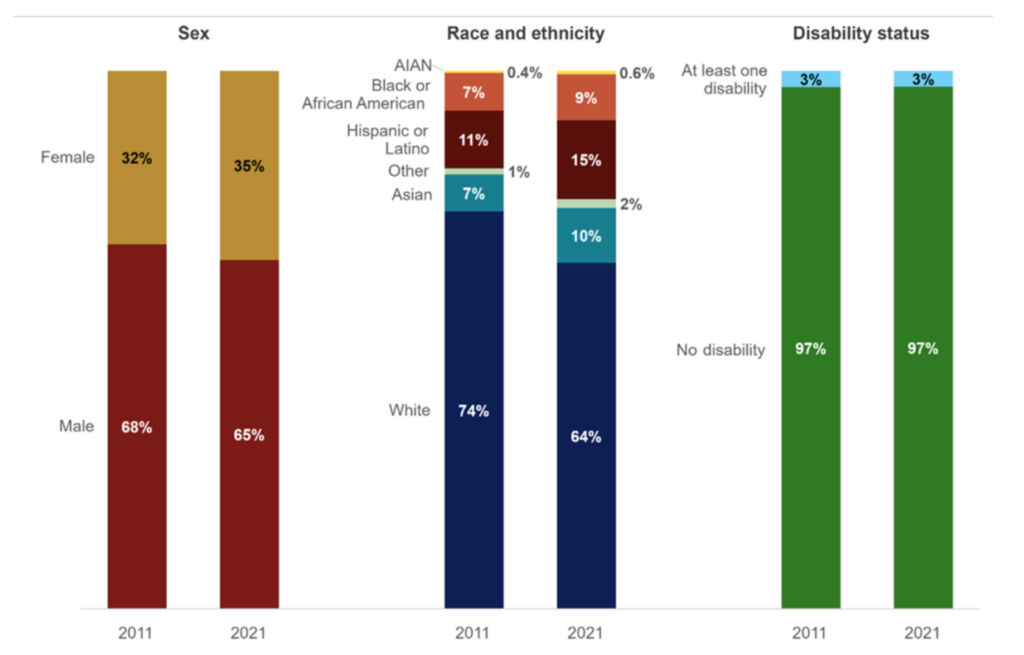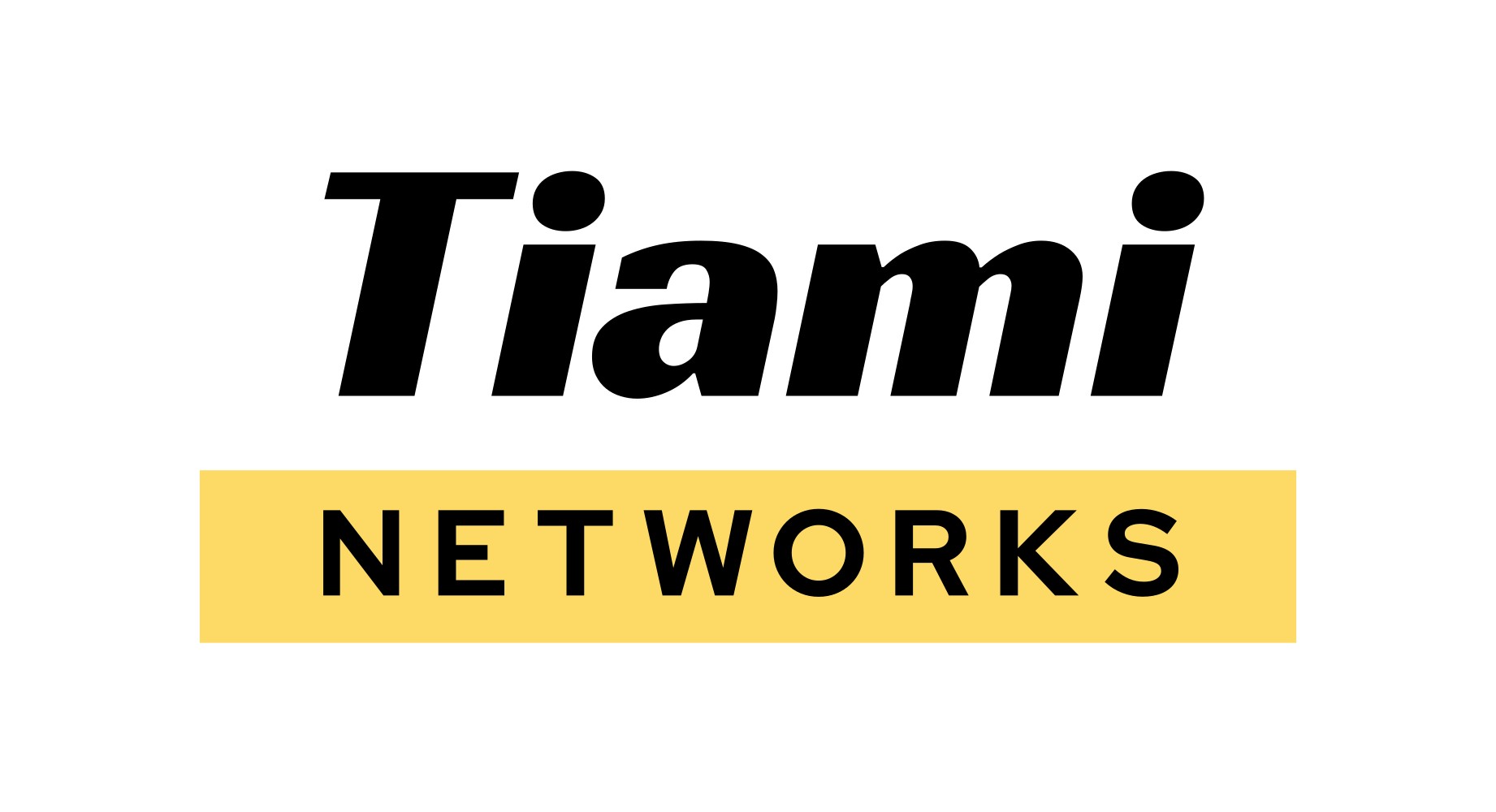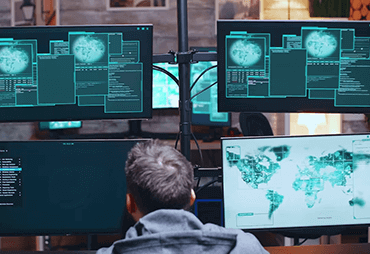Exploiting the Potential of 5G: Unleashing Transformative Power in Tactical Use Cases
Since the inception of the fifth generation of wireless technology, 5G, it has heralded a new era of digital innovation, changing the landscape of industries and societal norms. On Friday, August 4th, Army Gen. Laura Richardson shared that China is out-competing the US in the wireless network market, specifically with 5G technology. The US focuses on enhancing personal communication; however, 5G offers immense potential for transformative change in tactical environments. Its superior bandwidth, ultra-low latency, and improved connectivity create applications in critical areas such as military operations, disaster response, and public safety. This article highlights how 5G can revolutionize these fields, increasing efficiency and effectiveness.
Accelerating Decision-Making in Military Operations
The importance of real-time, reliable, and secure communication cannot be overstated in military settings. 5G’s ultra-reliable low-latency communication (URLLC) capabilities serve as the backbone for decision-making on the battlefield and equipping the warfighter with new capabilities. The enhanced data transfer rates facilitate quick dissemination of battlefield intelligence, enabling superior situational awareness and faster response times. As a result, decision-making processes are significantly accelerated, minimizing potential risks and increasing mission success rates.
Moreover, 5G’s ability to support many connected devices concurrently is a boon for the Internet of Military Things (IoMT) applications. Sensors, unmanned vehicles, and wearable technologies can seamlessly interact, creating an integrated network that promotes coordination and efficiency.
Optimizing Disaster Response and Management
Disaster response demands quick, reliable, and often remote communication. The extensive bandwidth and low latency of 5G empower robust telecommunication services even in remote or devastated areas. Drones, for instance, can be maneuvered in real-time to assess disaster-hit regions, sending back high-definition video feeds for accurate evaluation and subsequent action.
Furthermore, 5G can support mobile networks of sensors to monitor disaster-prone areas, providing early warnings and ensuring efficient evacuation processes. Consequently, the potential human and property loss can be significantly mitigated.
Reinventing Public Safety
Public safety is paramount, and technology should reinforce it. With 5G, we can envision a future where first responders are better equipped and informed. High-definition video feeds from surveillance cameras, biometric data from wearables, and real-time sensor updates can be rapidly processed and analyzed. This capability enhances situational awareness, enabling quick and accurate responses to emergencies.
Similarly, 5G’s network slicing feature can provide dedicated network resources to public safety agencies during emergencies, ensuring uninterrupted communication. Therefore, crucial information is delivered in real-time despite high network demand, enhancing public safety.
Conclusion
As we progressively transition into a 5G-enabled world, we must fully comprehend and harness the transformative power of this technology in tactical scenarios. Its applications extend far beyond enhanced personal communication, offering the potential for significant advancements in military operations, disaster management, and public safety, to name a few.
The future is not just about adoption; it’s about understanding and leveraging the technology to its full potential. It’s time to think creatively about 5G’s potential, challenge traditional operational norms, and implement innovative strategies that take full advantage of this transformative technology. The tactical use cases of 5G highlight its immense value and lay the foundation for a more connected, efficient, and secure future. In the face of such potential, the question is not whether we can afford to adopt 5G in tactical scenarios, but rather, can we afford not to?
Special Thanks
As we conclude this exploration into the transformative potential of 5G in tactical environments, we extend our heartfelt gratitude to our esteemed sponsors who made this insightful discourse possible.
We gratefully acknowledge the generous support of the United States Government small business innovation research (SBIR) programs: The Department of Commerce, the Department of Agriculture, the Department of Homeland Security, and the Navy. Their unwavering commitment to advancing technological understanding and their significant contributions to the field have allowed us to delve deeper into critical topics such as this. Through such generous sponsorships, we can continue provoking thought, engaging discourse, and inspiring action within our community and beyond.
So, to all our sponsors, we say thank you. Your contribution to this discourse does not merely support our work; it ignites progress, encourages innovation, and paves the way for a more connected, efficient, and secure future.
Recent Blogs
Tiami Networks Announces Strategic Collaboration to Transform 5G Networks
February 22, Elk Grove, California - Today, Tiami Networks announces a strategic collaboration with Intel, a leader in computing innovation. This collaboration marks a significant milestone in Tiami Networks' quest to revolutionize 5G technology, transforming global 5G networks into the world's largest radar system.
"Elk Grove is proud to be at the forefront of this technological leap. Piloting PolyEdge™ for traffic flow monitoring is not just about embracing innovation; it's about actively contributing to a smarter, safer, and more efficient community," commented Darrell Doan, Economic Development Director, Elk Grove, California.
A New Era of Connectivity: AI + 5G + Radar on Edge Devices
The collaboration with Intel is pivotal in the development of PolyEdge ™, Tiami Networks' cutting-edge technology that combines AI, 5G, and radar capabilities on edge devices. Tiami employs state-of-the-art 5G signal processing and proprietary machine learning algorithms for sensing, enhanced by Intel’s cutting-edge FPGA artificial intelligence framework.
This innovative approach is set to redefine connectivity and data analysis, promising significant advancements in areas like public safety, environmental monitoring, and smart city initiatives. By providing real-time data analysis, PolyEdge ™ can help in efficient resource allocation, emergency response optimization, and even tracking environmental changes with unprecedented accuracy.
"Intel is excited to see Tiami Networks utilize our technology in a transformative way. This collaboration showcases the versatility of Intel's FPGA artificial intelligence solutions and paves the way for groundbreaking advancements in 5G capabilities," said Mike Fitton, Network Business Division, Intel.
Looking Ahead
This collaboration represents a leap forward in technological integration, combining the strengths of Tiami Networks' innovative vision and Intel's robust technological infrastructure. The initiative is poised to set new standards in connectivity and data analysis, offering transformative solutions for cities, industries, and societies worldwide. "This collaboration with Intel is a game-changer. It enables us to bring our innovative technology to market, transforming the way we understand and interact with our environment. We're creating a new paradigm where 5G networks do more than connect – they perceive and respond.", said Amitav Mukherjee, CEO of Tiami Networks
Connect and Learn More
Tiami Networks will be showcasing PolyEdge™ at Mobile World Congress in Barcelona from 26-29 February, 2024. Stop by Stand #6F48 and experience the future of 5G.
About Tiami Networks
Founded by seasoned professionals from renowned telecom giants such as Ericsson, Verizon, Qualcomm, and Nokia, Tiami Networks is a visionary startup based in California. With deep-rooted expertise in telecommunications, our team is dedicated to revolutionizing the global 5G landscape. Our mission is to transform the 5G system into the world's largest distributed radar network, harnessing this technology for consumer and commercial applications. By integrating advanced AI and radar technology with 5G networks, Tiami Networks aims to create smarter, safer, and more efficient environments, enhancing connectivity and data analysis capabilities across various sectors. Our commitment to innovation positions us at the forefront of the next wave of technological advancements, poised to redefine the future of communication and environmental intelligence. Learn more at www.tiaminetworks.com
About Intel
Intel (Nasdaq: INTC) is an industry leader, creating world-changing technology that enables global progress and enriches lives. Inspired by Moore’s Law, Intel continuously works to advance the design and manufacturing of semiconductors to help address our customers’ greatest challenges. By embedding intelligence in the cloud, network, edge and every kind of computing device, Intel unlocks the potential of data to transform business and society for the better. To learn more about Intel’s innovations, go to newsroom.intel.com and intel.com.
For more information, please contact:
Tiami Networks
Mr. Tyrell Junius
Email: tjunius@tiaminetworks.com
Intel
Mr. Bret Gustafson
Email: bret.gustafson@intel.com
PolyEdge Solution Brief: Mobile World Congress Barcelona Demo in Partnership with Intel
The Imperative of Strengthening Skilled Labor for National and Economic Security: A Lesson from History
Following Labor Day observation, a tribute to the labor force that forms the nation's core, the critical conversation around fortifying skilled labor in the 14 essential technology areas for national and economic security gains prominence. The Bureau of Labor Statistics estimates that between 2021 and 2031, jobs for cybersecurity analysts will grow by 35% and software developers by 25%, outpacing the average 5% growth rate. This forecast, however, juxtaposes alarmingly with the existing deficiency in skilled labor, forming a paradox that warrants scrutiny.
Fortune highlights that the specialized talent arena has evolved into a global battlefield. Initiatives in countries like the United Arab Emirates, Canada, and Australia, which offer STEM and Entrepreneur VISAs, demonstrate the aggressive strides taken to attract high-skill professionals. Notably, a National Foundation for American Policy study illustrates that 55% of the U.S.'s billion-dollar startups feature at least one immigrant founder. This evidence robustly dispels notions of immigration as an economic drain. Instead, it attests to the essential role immigrants play in fostering technological innovation and economic development in the country.
Mechanisms like the STEM Optional Practical Training (OPT) augment the capabilities of the private sector and the Defense Industrial Base (DIB) by including international STEM scholars. According to a 2019 Department of Homeland Security report, there were an estimated 223,284 international students in STEM OPT between 2008 and 2017, providing a significant talent pool.
"The OPT-to-permanent residency route is fraught with delays and a perilous H1-B lottery as an intermediate step," says Tiami founder Amitav Mukherjee. "Many of the applicants to our career openings are visa holders and require support for obtaining work authorization."
Despite solid progress in harnessing international talent, limited U.S. minority participation and historical barriers exist in STEM today. The National Science Foundation (NSF) published its report on diversity in science, technology, engineering, and mathematics. The report shows that there has been very little progress in increasing diversity in the STEM workforce from 2011-2021 shown below.

To tailor effective reforms, one must scrutinize historical and contemporary policies that have indirectly and substantially discouraged minorities from grasping growth opportunities in these pivotal sectors.
The Present Challenge: 14 Critical Technology Areas
The United States has judiciously identified 14 technology areas—from Artificial Intelligence to BioTech —as critical national security and development vectors. These domains command an amalgam of specialized skills and inventive thinking. The director of the Defense Innovation Unit (DIU), Doug Beck, stated during the Emerging Technology Defense Conference, “Talent is available, willing to relocate and take 90% pay cuts, but most of that talent lives in expensive cities, and hiring authorities need to move faster.” In light of Director Beck's cogent observations, it becomes manifestly clear that the onus of optimizing this reservoir of talent—eager yet geographically constrained—falls upon the acceleration of recruitment procedures within these crucial technological sectors.
The United States has undertaken precise actions to cultivate local talent. NASA and the U.S. Department of Education have recently signed a memorandum of understanding to enhance STEM education. These efforts aspire to broaden STEM career pathways and increase representation in these 14 critical technology sectors by focusing on diversity, equity, and inclusion. The state Michigan announced its plan to increase domestic microchip production through targeted investments for PreK-12 programs. Despite such progress, as highlighted in a Brookings article, the Creating Helpful Incentives to Produce Semiconductors and Science (CHIPS) Act, while notable, has its focus narrowly set on financial incentives and fails to address other crucial elements like mentorship, access to professional networks, and career services. This oversight could limit the full utilization of the Act in building a robust and diverse skilled labor force in technology areas vital to national security.
Given the above data, one could argue for a more comprehensive approach to labor force development. While initiatives like STEM OPT, the state of Michigan microchip production, and collaborations between NASA and educational departments are positive steps, the CHIPS Act reveals that gaps still exist in addressing the full range of needs for skilled labor force development from grades PreK-12 in historic underinvested neighborhoods.
The Past is Prologue: Title XI and Redlining
A nuanced understanding of the past is indispensable to address present challenges. Federal policies such as Title XI in education and redlining in housing have historically laid an uneven foundation, particularly impacting minority communities. Their ramifications persist today, contributing to the shortage of skilled labor in critical technology sectors.
Emerging from the Education Amendments of 1972, Title XI was designed to extirpate discrimination based on sex in educational programs subsidized by federal monies. However, its reach has been fundamentally constrained by pervasive social prejudices. According to the NSF, women comprise 28% of the STEM workforce. This underrepresentation is exacerbated among minority women. While Title XI had laudable aims, it failed to address the comprehensive barriers marginalized communities face. The limited reach of this policy manifests today as an acute shortage of domestic skilled labor in technology and engineering.
Tracing its roots to the 1930s, the practice of redlining saw federal agencies ascribing "credit risk" status to neighborhoods, a classification covertly correlated with racial composition. Financial inequities resulted in the denial of credit and financial infrastructure, pushing these locales into economic retrogression.
The National Community Reinvestment Coalition found that 74% of neighborhoods marked as hazardous ('redlined') in the 1930s were likelier to comprise low-income, minority communities today. Such systemic economic stagnation has, in turn, perpetuated a cycle of poor education and limited career opportunities. The Education Commission of the States shared that schools in high-poverty areas are less likely to offer advanced math and science courses that are often prerequisites for STEM careers. Lack of STEM investment in historically marginalized communities directly impacts the readiness of individuals from these communities to participate in high-growth sectors as future employees and business owners, including the 14 technology areas deemed critical for national security.
Both Title XI and redlining, although disparate in intent and focus, converge in their cumulative effect: they have restricted the access of minority communities to burgeoning fields essential for national wellbeing. It is not just an issue of social justice but national competence and security.
As we engage in discussions surrounding skilled labor shortages and national security, these historical policy failures must inform future strategies. The data points towards an inextricable link between past policies and present challenges. We must continue to examine how specific federal policies, such as Title XI education and redlining within the housing market, created and continue to enable an uneven playing field, particularly for minority communities. Comprehensive reforms rooted in understanding these systemic issues are needed to redress this gap effectively.
Room for Contemplation
While strengthening skilled labor is undeniably essential, proceeding with nuance is imperative. Some critics might argue that focusing on specialized skills could overlook other vital areas, such as healthcare and social services, which also face labor shortages. However, given China's threat of global competition, the CHIPs act was politically justified with bipartisan support. The U.S. Commerce Secretary Gina Raimondo called on students of every level of education to pursue careers in semiconductor manufacturing and related industries. Nonetheless, the nature of the 14 technology areas is such that advancements in them could invariably benefit these other sectors.
The gravity of bridging the skilled labor gap becomes apparent, not just as an economic necessity but as an imperative for national security. As we look forward to future Labor Days, it is incumbent upon policymakers, technologists, and public and private sector leaders to use this as an inflection point for change, leveraging historical lessons and data to devise holistic strategies that are inclusive and effective. Such camaraderie requires a holistic approach that draws lessons from the historical shortcomings of policies like Title XI and redlining while also keeping a keen eye on the future needs of the 14 critical technology sectors. The United States can only truly secure its domestic and global standing through such a concerted effort.
Tiami Networks Introduces Innovative Reduced-Order Modeling Solution for Data Communication Networks
[Sacramento, August 14th, 2023] – Tiami LLC, a leading wireless communication technology company specializing in critical communication infrastructure solutions, is excited to announce its groundbreaking initiative to develop a revolutionary reduced-order modeling solution for data communications networks. This pioneering endeavor addresses the pressing need for enhanced security and vulnerability assessment in modern communication systems, and received an FY23 Phase I Small Business Innovation Research (SBIR) contract from the U.S. Department of Homeland Security.
Tiami's research and development efforts will focus on creating a reduced-order model for low-complexity high-fidelity digital twins of critical communications networks used in power grids and public safety. Leveraging advanced graph clustering methods, Tiami intends to unlock the potential of reduced-order modeling for uncovering critical variables that may be susceptible to unauthorized access or manipulation.
Tiami's cutting-edge methodology will apply to two prominent network exemplars widely utilized in critical infrastructure environments: supervisory control and data acquisition (SCADA) systems in electrical power grids, oil and gas fields, and mission-critical push-to-talk networks used by first responders.
"We are thrilled to embark on this transformative journey to enhance the security and resilience of data communications networks," said Dr. Amitav Mukherjee, Founder, and CTO at Tiami Networks. "By leveraging reduced-order modeling techniques and harnessing our expertise in critical communication infrastructure, we aim to uncover potential vulnerabilities, empower stakeholders, and facilitate informed decision-making in the face of emerging threats."
By collaborating with industry leaders, Tiami seeks to empower organizations with advanced tools that safeguard critical communications infrastructure and promote a secure digital ecosystem.
For media inquiries, please contact:
Tyrell Junius
Co-Founder & COO
Tiami LLC
founders@tiaminetworks.com
About Tiami
Tiami is a leading dual-use wireless communication technology company specializing in critical communication infrastructure solutions for commercial and security applications. With a focus on innovation, safety, and diversity, Tiami develops cutting-edge technologies and methodologies to protect and enhance the resilience of networks worldwide.
Exploiting the Potential of 5G: Unleashing Transformative Power in Tactical Use Cases
Since the inception of the fifth generation of wireless technology, 5G, it has heralded a new era of digital innovation, changing the landscape of industries and societal norms. On Friday, August 4th, Army Gen. Laura Richardson shared that China is out-competing the US in the wireless network market, specifically with 5G technology. The US focuses on enhancing personal communication; however, 5G offers immense potential for transformative change in tactical environments. Its superior bandwidth, ultra-low latency, and improved connectivity create applications in critical areas such as military operations, disaster response, and public safety. This article highlights how 5G can revolutionize these fields, increasing efficiency and effectiveness.
Accelerating Decision-Making in Military Operations
The importance of real-time, reliable, and secure communication cannot be overstated in military settings. 5G's ultra-reliable low-latency communication (URLLC) capabilities serve as the backbone for decision-making on the battlefield and equipping the warfighter with new capabilities. The enhanced data transfer rates facilitate quick dissemination of battlefield intelligence, enabling superior situational awareness and faster response times. As a result, decision-making processes are significantly accelerated, minimizing potential risks and increasing mission success rates.
Moreover, 5G’s ability to support many connected devices concurrently is a boon for the Internet of Military Things (IoMT) applications. Sensors, unmanned vehicles, and wearable technologies can seamlessly interact, creating an integrated network that promotes coordination and efficiency.
Optimizing Disaster Response and Management
Disaster response demands quick, reliable, and often remote communication. The extensive bandwidth and low latency of 5G empower robust telecommunication services even in remote or devastated areas. Drones, for instance, can be maneuvered in real-time to assess disaster-hit regions, sending back high-definition video feeds for accurate evaluation and subsequent action.
Furthermore, 5G can support mobile networks of sensors to monitor disaster-prone areas, providing early warnings and ensuring efficient evacuation processes. Consequently, the potential human and property loss can be significantly mitigated.
Reinventing Public Safety
Public safety is paramount, and technology should reinforce it. With 5G, we can envision a future where first responders are better equipped and informed. High-definition video feeds from surveillance cameras, biometric data from wearables, and real-time sensor updates can be rapidly processed and analyzed. This capability enhances situational awareness, enabling quick and accurate responses to emergencies.
Similarly, 5G's network slicing feature can provide dedicated network resources to public safety agencies during emergencies, ensuring uninterrupted communication. Therefore, crucial information is delivered in real-time despite high network demand, enhancing public safety.
Conclusion
As we progressively transition into a 5G-enabled world, we must fully comprehend and harness the transformative power of this technology in tactical scenarios. Its applications extend far beyond enhanced personal communication, offering the potential for significant advancements in military operations, disaster management, and public safety, to name a few.
The future is not just about adoption; it's about understanding and leveraging the technology to its full potential. It's time to think creatively about 5G's potential, challenge traditional operational norms, and implement innovative strategies that take full advantage of this transformative technology. The tactical use cases of 5G highlight its immense value and lay the foundation for a more connected, efficient, and secure future. In the face of such potential, the question is not whether we can afford to adopt 5G in tactical scenarios, but rather, can we afford not to?
Special Thanks
As we conclude this exploration into the transformative potential of 5G in tactical environments, we extend our heartfelt gratitude to our esteemed sponsors who made this insightful discourse possible.
We gratefully acknowledge the generous support of the United States Government small business innovation research (SBIR) programs: The Department of Commerce, the Department of Agriculture, the Department of Homeland Security, and the Navy. Their unwavering commitment to advancing technological understanding and their significant contributions to the field have allowed us to delve deeper into critical topics such as this. Through such generous sponsorships, we can continue provoking thought, engaging discourse, and inspiring action within our community and beyond.
So, to all our sponsors, we say thank you. Your contribution to this discourse does not merely support our work; it ignites progress, encourages innovation, and paves the way for a more connected, efficient, and secure future.
Tiami Networks Update
Tiami Networks attended three key stakeholder gatherings this past quarter that has transformed our product development roadmap and vision for connecting the world to fast, reliable wireless signal. From the World Business Satellite Week in Paris, the 6G Symposium in D.C., and participating in the National Spectrum Consortium Summit, Tiami Networks works across industries to galvanize standard settings to support the acceleration of digital transformation. Tiami is building the world’s first 5G repeater using simultaneous transmit and receive (STAR) patented technology from the Air Force. Utilizing extensive bandwidth with small Size, Weight, and Power (SWaP) to enable STAR meshed radio networks. Tiami's STAR technology delivers spectrum-aware, agile communications capable of operating in all environments, such as rural, peri-urban, urban, contested, or congested tactical locations.
Unlicensed, shared and licensed spectrum to leapfrog connectivity
The digital divide exists not only in emerging and low to middle-income countries but also across the USA. The digital divide is starkly evident in the Federal Communications Commission (FCC) broadband coverage map shown in Figure 1, which shows that scores of counties (shown in yellow) with more than 50% population being rural lack access to broadband service, defined as 25 download/3Mbps upload speeds [FCCMap]. These communities are concentrated in the U.S. Mountain West, South Central, and Southeast regions. More specifically, the FCC stated that 22.3% of Americans in rural areas and 27.7% of Americans in Tribal lands lack coverage from fixed terrestrial broadband, as compared to only 1.5% in urban areas. How can the industry leverage shared, unlicensed, and licensed spectrum to leapfrog connectivity?

Figure 1: FCC map of broadband availability in counties with more than 50% rural population.
Combining LEO and terrestrial networks can unlock new capabilities
CEO of Axess Networks, Mr. Mauricio Segovia, noted that "vertically integrated services are key to addressing the unconnected populations.” Network design, hardware, procurement, and network optimization are needed in collaboration with MNOs and cellular/terrestrial backhaul to play a pivotal role in combating hard-to-reach locations. The 3GPP standard and direct-to-satellite-to-cell connectivity sparked T-Mobile and Apple to sign contracts and partnerships to leverage satellite services and integrate them with their existing infrastructure. Furthermore, the main themes at the 6G symposium explored extended reality (X.R.), satellite and other non-terrestrial networks (NTN), and artificial intelligence and machine learning (AI/ML).

Figure 2 CEO of Axess Networks, Mr. Mauricio Segovia
The importance of people, profits, and the planet
A lack of broadband access negatively impacts rural health and inclusivity. The AARP digital inclusion report for aging populations noted that 22 million older adults across the U.S. lack broadband access at home, especially in rural areas. Research suggests that older Americans living in rural areas are 11% more likely to lack basic digital skills than those in urban communities. More training is required to help onboard older generations (> 73.3 years on average) for the new digital economy in rural counties across the USA. As shown below, despite the rise in rural adoption of broadband, rural residents are still less likely than those living in suburban areas to report having home broadband and utilizing technologies.

Figure 3: Digital adoption disparities between rural and urban Americans.
Tiami Networks plans to serve rural communities across the USA. Outside of the rural market opportunities, tier-1 operators are key customers with nationwide and private mobile networks deployed by new verticals such as manufacturing and utilities. According to the Global Mobile Suppliers Association (GSA), 413 operators in 131 countries/territories invest in 5G network tests, trials, pilots, and planned and actual deployments. Furthermore, economic development agencies across the U.S. are deploying capital with a $9 billion 5G rural broadband rollout plan.
Satellite, mobile network operators, start-ups, and regulators have a pivotal role in continuing to drive innovation as the world competes with priorities in climate, food security, and geopolitical tension! Combining all three overarching themes will manifest a new complex ecosystem and force collaboration that never existed.





